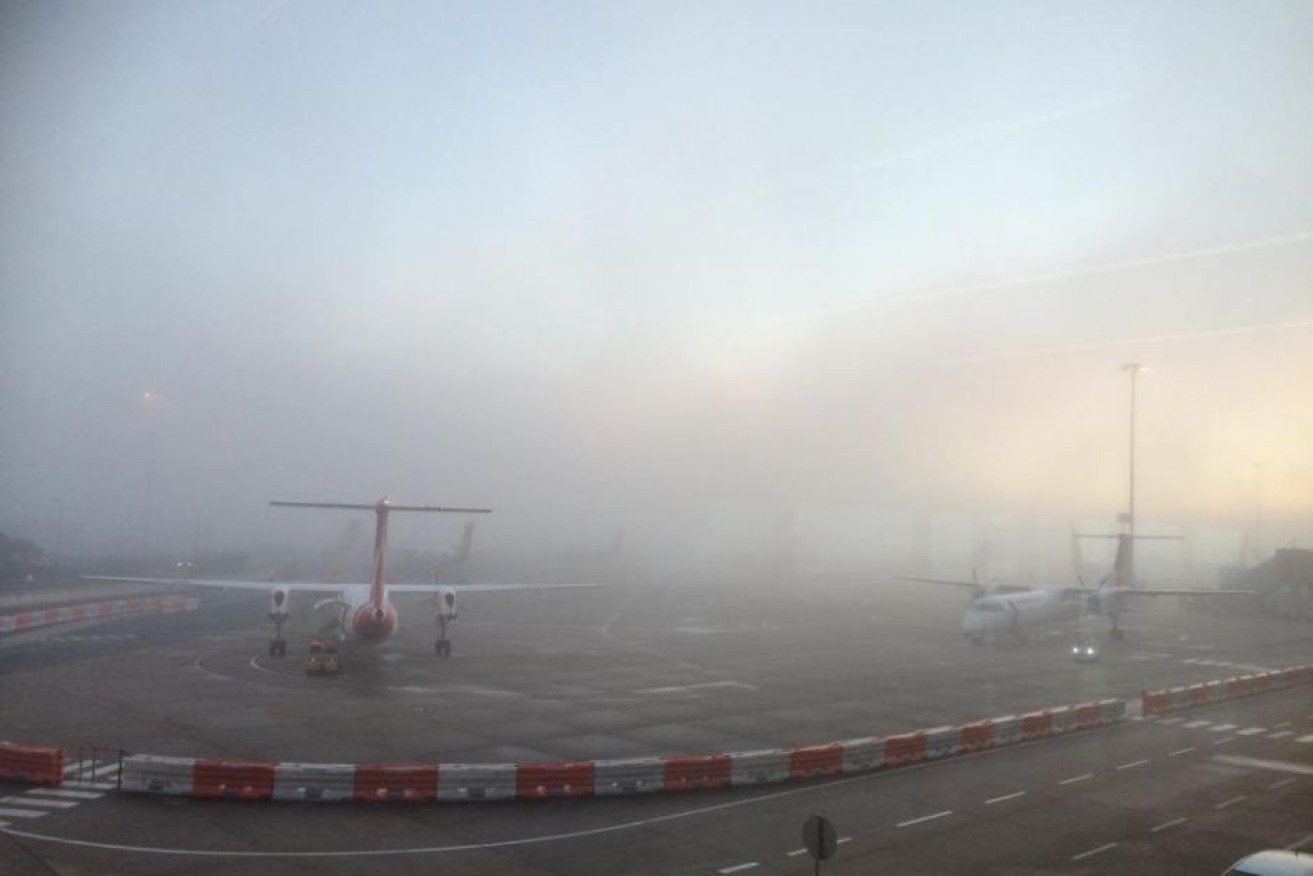Why planes can only land at two Australian airports in thick fog

It was only last month a second Australian airport could land planes in thick fog. Photo: Pete Lewis
The most dangerous part of any flight is the final approach and landing.
But when the thick winter fog rolls in, the stakes become even higher as visibility for pilots drops to a matter of metres.
Sometimes airports are forced to temporarily shut down until the skies clear, with the delays causing chaos for commuters and flow-on effects for other airports.
But now in Melbourne and Perth, air traffic controllers have an extra string to their bow.
It’s called Cat IIIB certification.
The high-tech system allows pilots to land even when visibility drops to just 75 metres – a distance less than half that of the length of the MCG.
What is the Cat IIIB system?
It’s a ground-based system that uses radio signals, powerful lighting and fog detectors to guide planes towards the runway.
It works like this:
ANTENNAS
Two antennas, one at each end of the runway, send signals to a plane’s cockpit about lining up with the tarmac.
The glide path tower and localiser work together to provide vertical and horizontal information. This is known as the Instrument Landing System.
LIGHTING
There are some 8000 lights on the runway, which flash to guide pilots into the right position.
At Melbourne Airport, four generators are switched on in low visibility to power the lights, with mains power providing back-up.
TRANSMISSOMETERS
These are sensors dotted around the airfield to measure visibility (or Runway Visual Range).
In Melbourne, there are six sets of sensors at the airport.
Who’s keeping watch on the ground?
That’s the job of five employees of Airservices Australia.
In the control tower at Melbourne Airport, they use ground radar to make sure the runway is clear.
One of their most important tasks is to keep the landing area clear of vehicles and aircraft.

A crew of five keep watch in the control tower at Melbourne. Photo: ABC
That’s because drivers and pilots getting too close to the antennas can interfere with the Instrument Landing System.
Shift supervisor Peter McMillan said planes disappear from the tower’s airborne radar in heavy fog.
“We see them on the ground radar and they look to be at landing speed,” he said.
“We’ll hear the reverse thrusters – that’s a good sign, and before we had ground radar in the old tower that’s how we would tell if they’d landed.”
Why are there still delays in Melbourne and Perth on foggy days?
Both Melbourne and Perth airports have two runways, but each only has one runway that is Cat IIIB certified.
Perth only got its certification at the end of May. Plus, not all pilots are trained or aircraft certified to make use of the system.

Special generators provide power for the high-tech fog system at Melbourne Airport. Photo: ABC
Mr McMillan said approaching planes were also forced to slow down to allow time for others to take off.
“The next arrival will be 10 miles behind, so that gives us adequate time to have a departure in between,” he said.
Why don’t other airports have Cat IIIB certification?
Well, it comes down to cost.
Melbourne and Perth airports average up to 15 days a year of very thick fog, according to Airservices Australia.
But it said Sydney, for example, averages less than five days a year.
A spokesperson for the organisation said the cost of the system cannot be justified for other Australian airports.
“The cost benefit of installation and maintenance of the system for airports who would very rarely use the system is taken into consideration with this scenario,” they said.
Why don’t both runways at Melbourne Airport allow planes to land in heavy fog?
Only Melbourne’s north-to-south runway is Cat IIIB certified.
The airport’s second east-to-west runway has the lighting and fog detectors, but its antennas require certification and possibly an upgrade.

Melbourne Airport airfield manager Luc Ramalinga wants the system on every runway eventually. Photo: ABC
The number of passengers passing through the airport is expected to rise to about 70 million a year by 2038.
Management is planning to build a third runway to cater for the increased traffic.
Airfield manager Luc Ramalinga said management wants to install the necessary equipment on all three runways to allow for Cat IIIB certification.
“Melbourne Airport is the busiest 24/7 airport in Australia,” he said.
“It will mean less delays and abilities to get out of Melbourne quicker.”
The airport still needs approval from the federal government for the third runway.
It is hopeful construction can start between 2019 and 2021.








